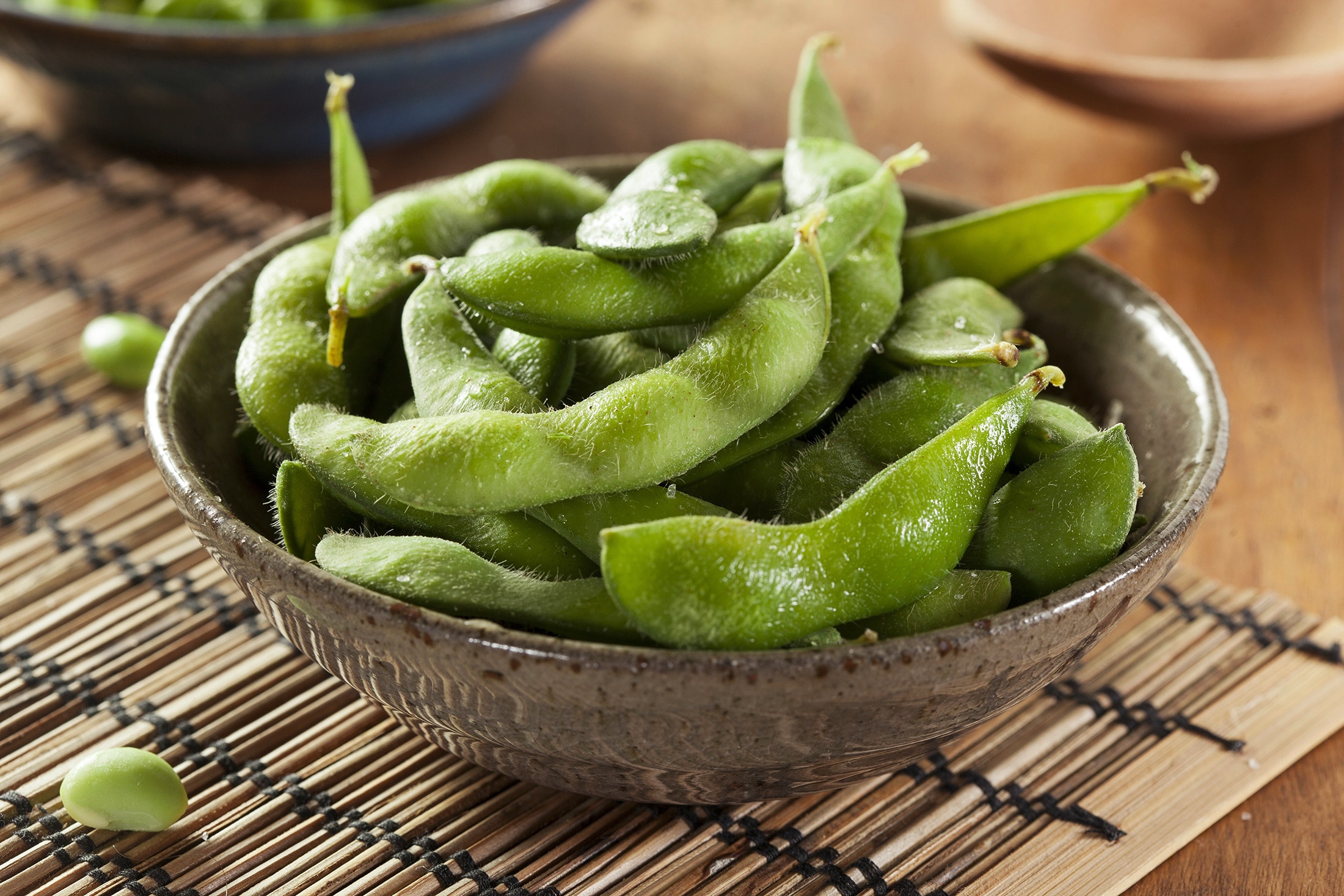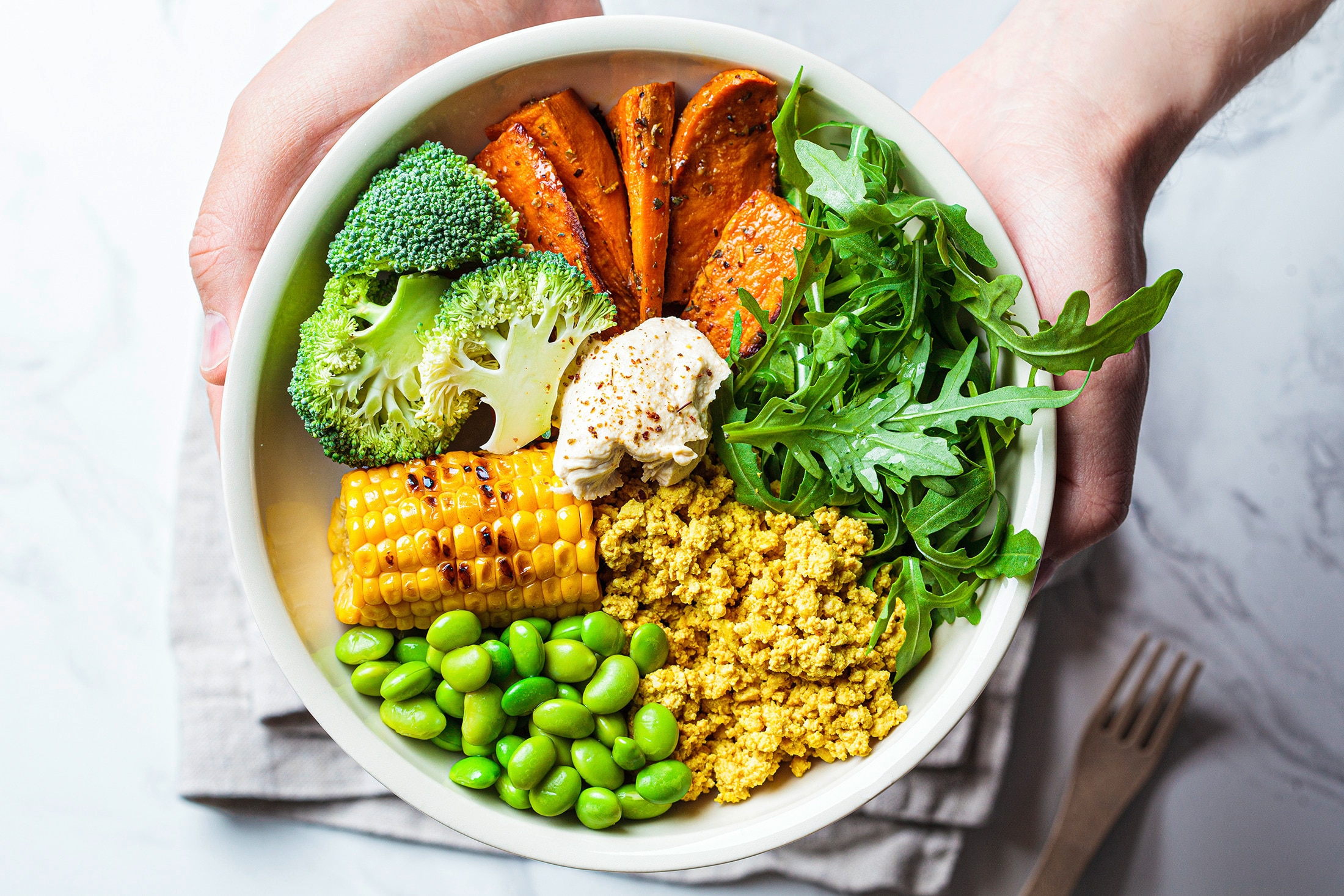Skip to:
Protein is an essential macronutrient for building and repairing muscles, among other functions. The more active you are, the more protein you need in your diet. But not all are as good for your body as others. That’s why it’s vital to have a balance of different sources, from lean meats to high-protein vegetables.
If you’re nurturing a young athlete at home, you must ensure that their diet supports their lifestyle. According to Harvard University professor Walter Willett, it’s best to get your protein from plant-based sources as much as possible. They’re more beneficial to your health and have fewer drawbacks. Your options include legumes at the top of the list, along with other vegetables like broccoli and corn. Here are just eight picks to start with, plus recipe ideas that the whole family will love.
1. Edamame

Edamame refers to young, unripe soybeans. Like all things soy, they’re a staple across Asian cuisine. Many Japanese restaurants serve them as an appetizer, enjoyed for their mild yet satisfying flavor. But the best part? They pack at least 17 grams of protein per cup (cooked). That’s already almost half of the recommended daily allowance for teens!
You can find frozen edamame in major supermarkets. Fresh and freeze-dried options are also available, though you’ll need to source these from Asian groceries. For prep and cooking, you can keep it simple. Blanch in salted water until the beans are soft but not mushy, then serve in-pod. Have them ready as an after-school snack or pack them for baon as light fuel before training.
2. Lentils

Lentils come in a rainbow of colors. These edible seeds of the legume family offer up to 18 grams of protein per cup (boiled). In Indian cuisine, split pulses (including lentils) are a staple everyday food called dal. They’re a must in curries, stews, and soups, loaded with various flavorful spices.
Most supermarkets and specialty groceries sell lentils in bulk and at affordable price points. If you're short on time, opt for canned lentils since you won’t need to soak and boil them before cooking. These legumes are quite versatile and easy to turn into many hearty, filling dishes! Serve them in a stew with a side of rice or naan, or cook them into patties for a plant-based burger.
3. Chickpeas

Chickpeas or garbanzos are another accessible legume with at least 15 grams of protein per cup. Like lentils, they’re an all-around ingredient you can enjoy in various ways. If you're working with dried chickpeas, just soak them in water, then let them simmer for a few hours until softened. You can also use the canned variety as a quick-cook option.
Try tossing them in olive oil and spices before popping them in the oven to roast. Crispy roasted chickpeas are yummy as snacks or toppings for simple salads or soups. Think of them as a protein-rich alternative to croutons! For ulam, try making a Japanese-style vegetarian curry with chickpeas, roux, and lots of veggies. Lastly, give homemade hummus a shot. Once you do, you’ll never go for store-bought again!
4. Mung Beans

Mung beans are also a staple legume that offers roughly the same amount of protein as lentils and chickpeas. Since the beans are essential to the local diet, you can easily find them wherever you get your pantry goods. Filipinos call them monggo, the star ingredient of a classic stew.
Make sure you presoak your monggo before cooking. After that, they’re ready to transform into ginisang monggo with just a few additions. Throw in some aromatics, veggies like tomatoes or malunggay leaves, and Knorr Beef Cubes to give the dish a deep umami. Optionally, add smoked fish or pork to bulk it up. You can also cook your mung beans in coconut milk and spices to make curry. Both pair well with rice! Tip: make a big batch of ginisang monggo and serve it as a side dish with meals to up your protein intake.
5. Bean Sprouts

If you remember your elementary science projects, you’ll know that bean sprouts (togue) come from mung beans. They're quick to grow and cultivate at home, so you can have an endless supply with just one bag of dried beans. These offer about 3 grams of protein per cup, but you can easily pair them with tofu and shrimp to amp their nutritional value.
Lumpiang togue, ginisang togue, and ukoy na togue are just three Filipino dishes that feature this humble sprout. Each recipe relies on basic pantry staples and other budget-friendly veggies, so they’re a great everyday option. In Korean cuisine, bean sprouts are a common ingredient in banchan or side dishes that accompany every meal. Want to learn a new togue recipe? Try sukju-namul, a blanched bean sprout salad flavored with sesame oil and soy sauce.
6. Potatoes

Most people enjoy potatoes as an energizing high-carb staple, but did you know they offer some protein, too? One large potato, like the kind you use for a loaded baked potato, can have as much as 7 grams of protein. White potatoes are also a great source of essential amino acids, including lysine, which facilitates healthy growth and sustained energy.
These delicious tubers have near-endless applications. As Samwise Gamgee from The Lord of the Rings once famously said, you can “boil ‘em, mash ‘em, put ‘em in a stew.” Plus, most kids won't need much convincing to eat these. They’ll love them as french fries (air-fried for less oil!), in tortang patatas, as a creamy mash, as baked croquettes, as tater tots, and so much more.
7. Broccoli

Broccoli used to inspire the ire of kids everywhere, but thankfully, tastes are evolving. Kid-friendly broccoli recipes, like this creamy chicken soup, make it easier to sneak these onto picky eaters’ plates. These baby trees have a crisp-tender texture and a slightly sweet taste. Chopped broccoli has about 2.5 grams of protein per cup, plus lots of other nutrients like fiber. Fresh broccoli can be quite expensive, so save yourself a few pesos and go for frozen instead. It works just as well in stir-fries, pasta, and even baked dishes!
8. Cauliflower

If you prefer broccoli’s cruciferous cousin, the cauliflower, you’ll be pleased to know that it has roughly the same amount of protein. Cauliflower recipes are all the rage these days, so take your pick. Try making cauliflower rice, soup, pizza, and other trendy dishes. You can even make your own vegan “cheese” with cauliflower!
Just adding one or two of these high-protein vegetables to your kids’ daily meals can help build muscles, maintain a healthy weight, and stay full for longer. So, the next time you plan your family’s menu, make plant-based protein a priority!

